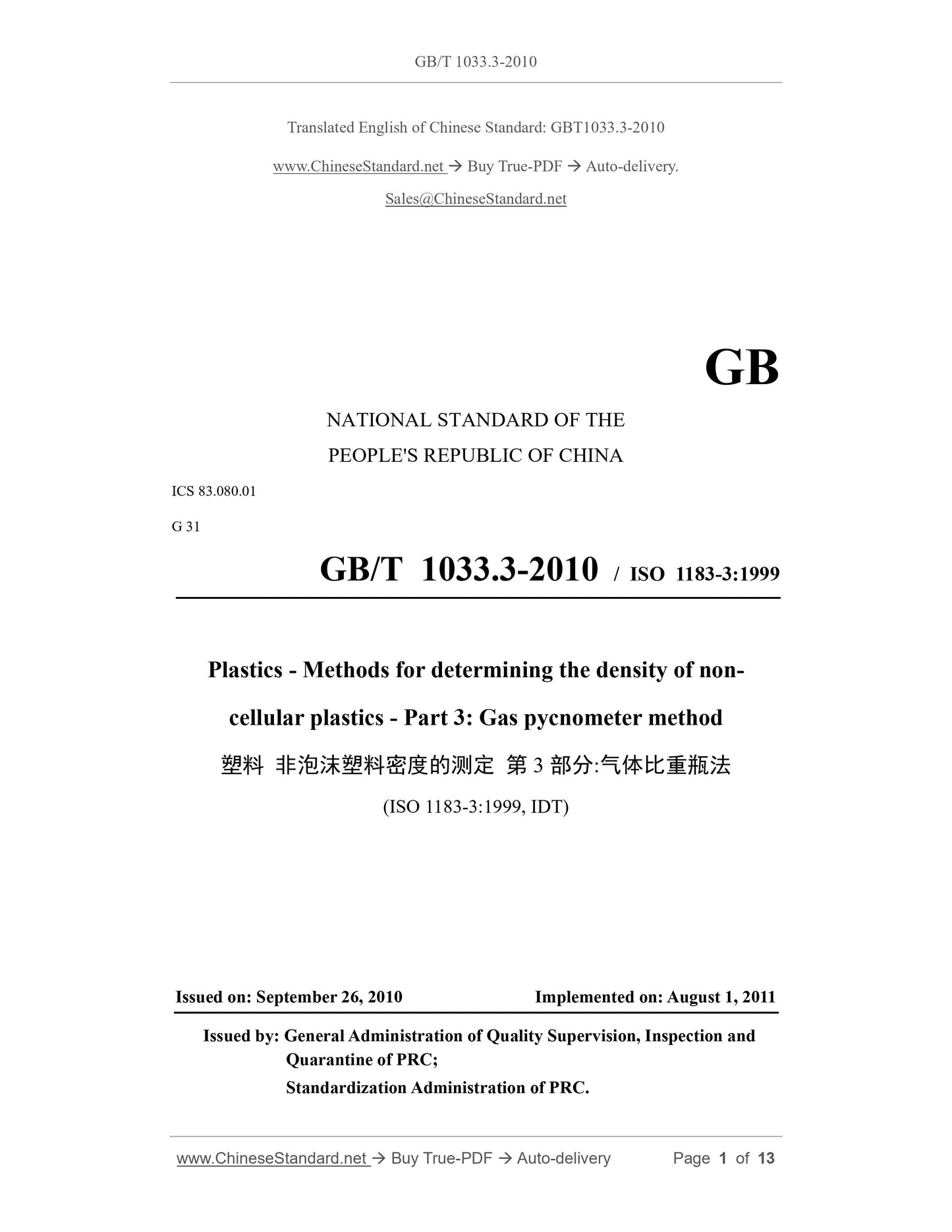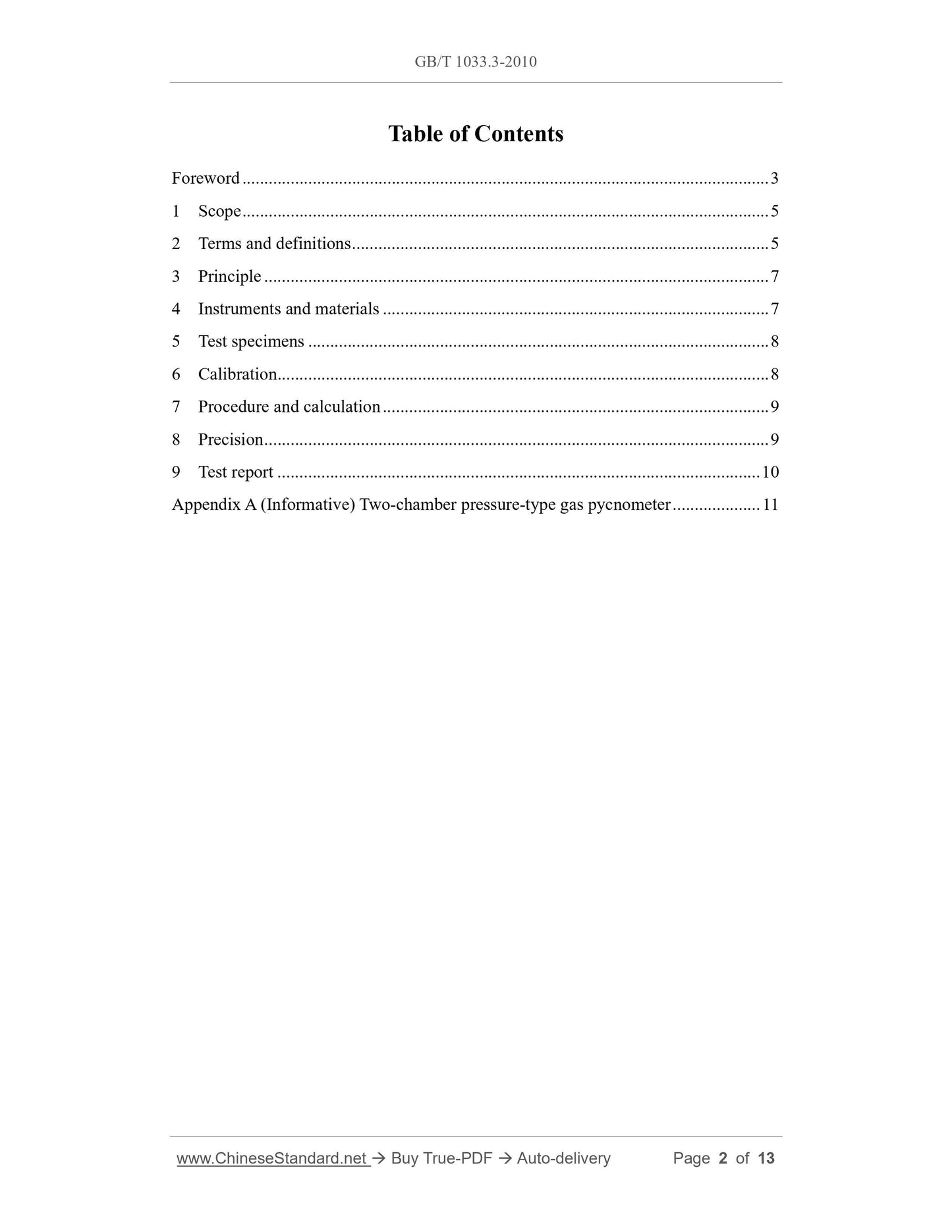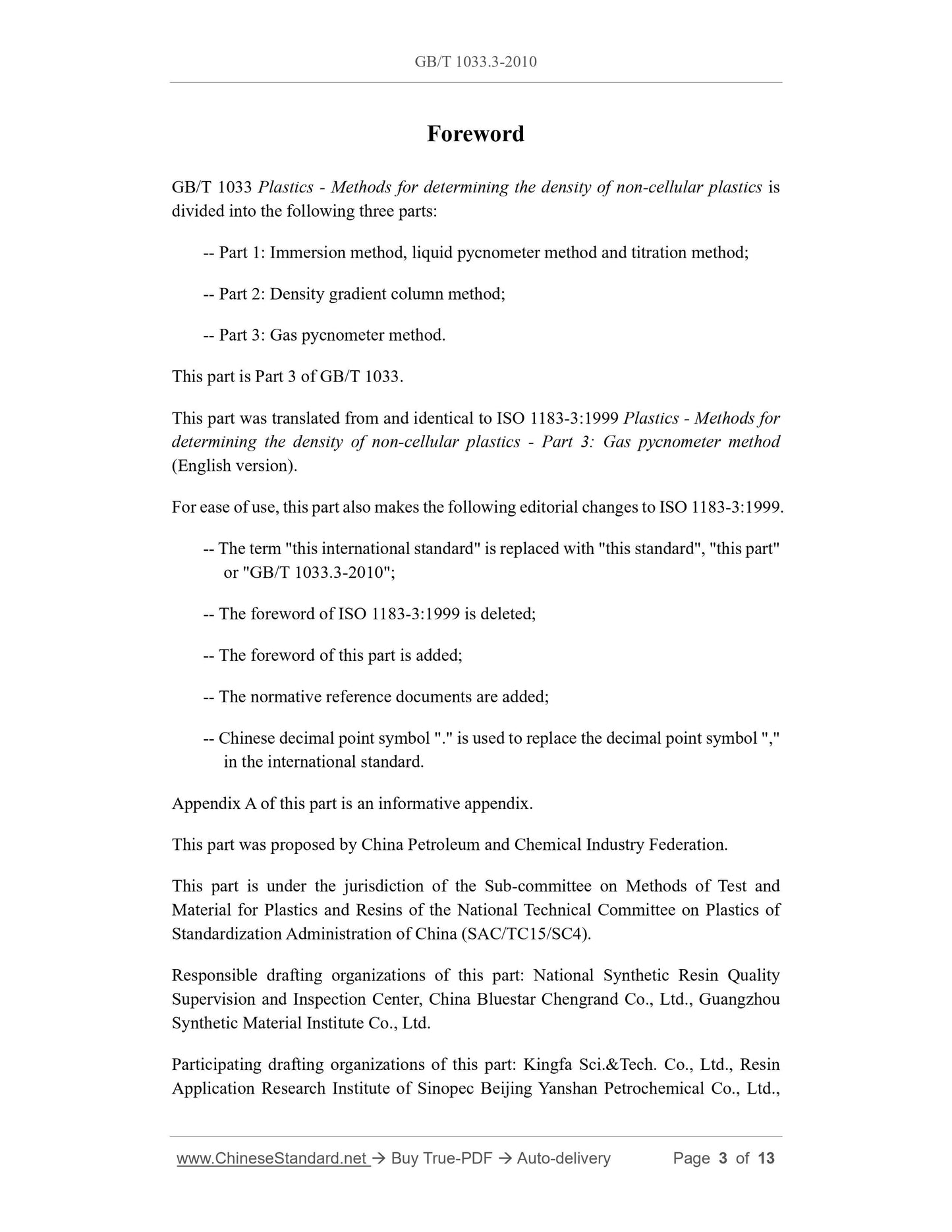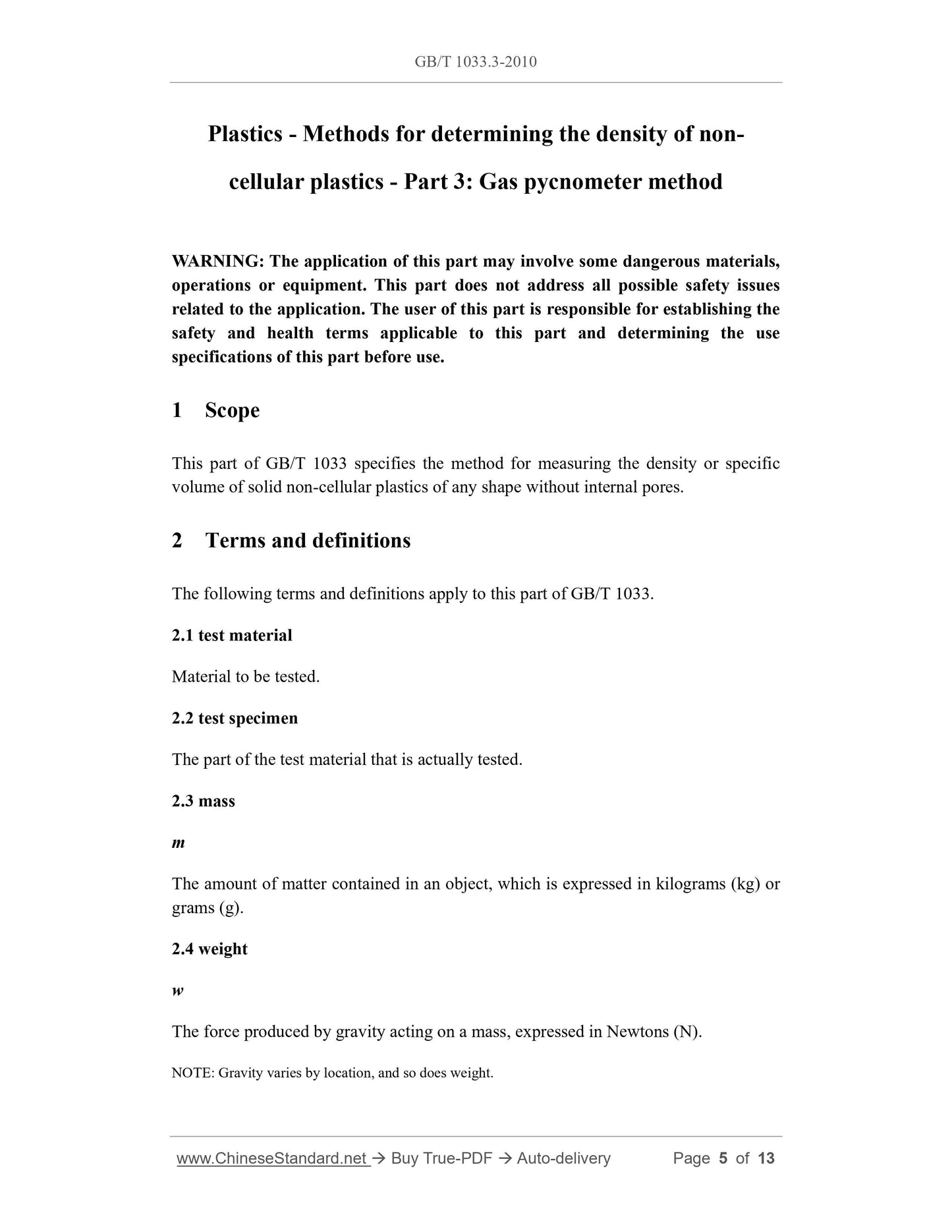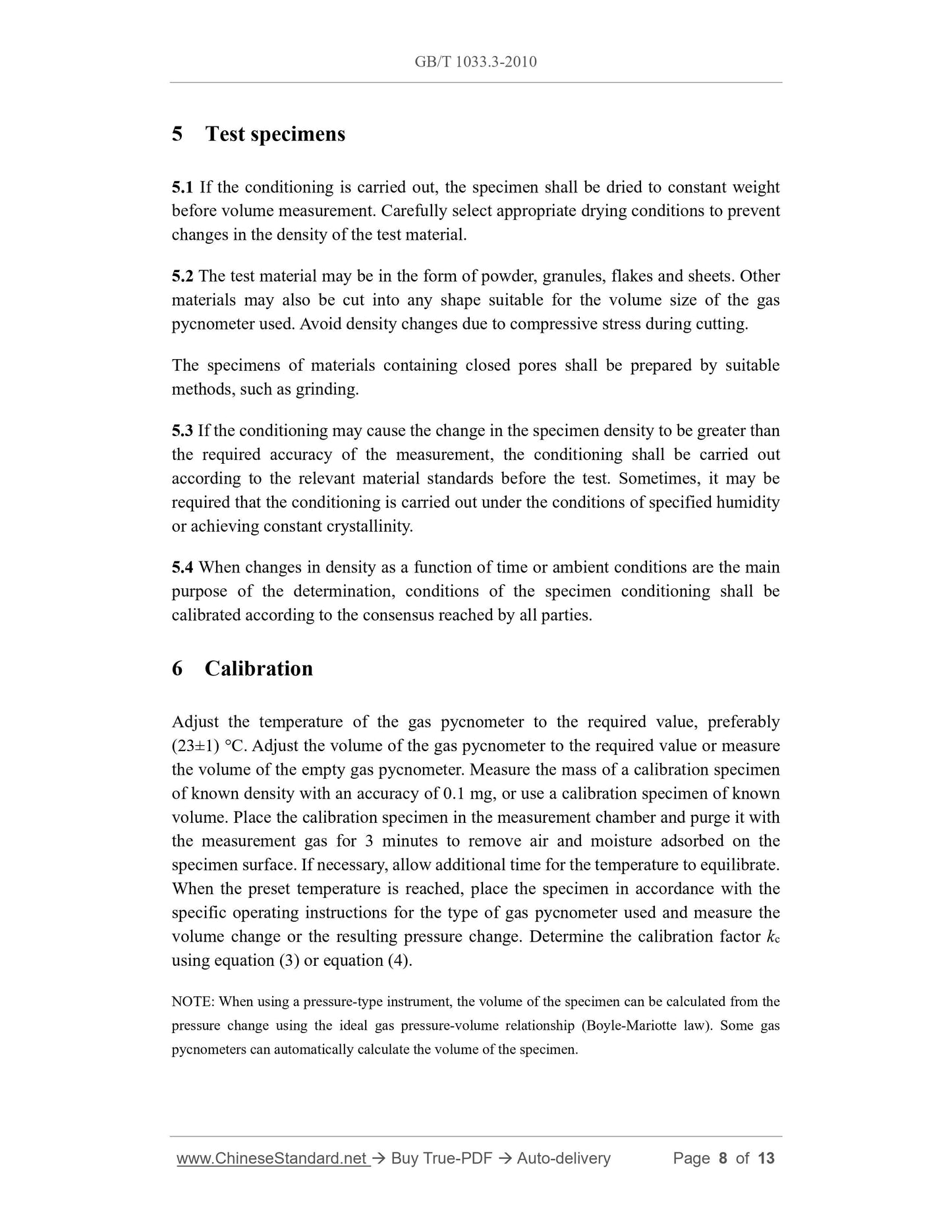1
/
of
5
www.ChineseStandard.us -- Field Test Asia Pte. Ltd.
GB/T 1033.3-2010 English PDF (GB/T1033.3-2010)
GB/T 1033.3-2010 English PDF (GB/T1033.3-2010)
Regular price
$125.00
Regular price
Sale price
$125.00
Unit price
/
per
Shipping calculated at checkout.
Couldn't load pickup availability
GB/T 1033.3-2010: Plastics -- Methods for determining the density of non-cellular plastics -- Part 3: Gas pycnometer method
Delivery: 9 seconds. Download (and Email) true-PDF + Invoice.Get Quotation: Click GB/T 1033.3-2010 (Self-service in 1-minute)
Newer / historical versions: GB/T 1033.3-2010
Preview True-PDF
Scope
This part of GB/T 1033 specifies the method for measuring the density or specificvolume of solid non-cellular plastics of any shape without internal pores.
Basic Data
| Standard ID | GB/T 1033.3-2010 (GB/T1033.3-2010) |
| Description (Translated English) | Plastics -- Methods for determining the density of non-cellular plastics -- Part 3: Gas pycnometer method |
| Sector / Industry | National Standard (Recommended) |
| Classification of Chinese Standard | G31 |
| Classification of International Standard | 83.080.01 |
| Word Count Estimation | 9,944 |
| Date of Issue | 2010-09-26 |
| Date of Implementation | 2011-08-01 |
| Adopted Standard | ISO 1183-3-1999, IDT |
| Regulation (derived from) | National Standard Approval Announcement 2010 No.6 (Total No.161) |
| Issuing agency(ies) | General Administration of Quality Supervision, Inspection and Quarantine of the People's Republic of China, Standardization Administration of the People's Republic of China |
| Summary | This standard specifies the method for measuring the interior does not contain any form of solid, non- pore foam density or specific volume. |
Share
